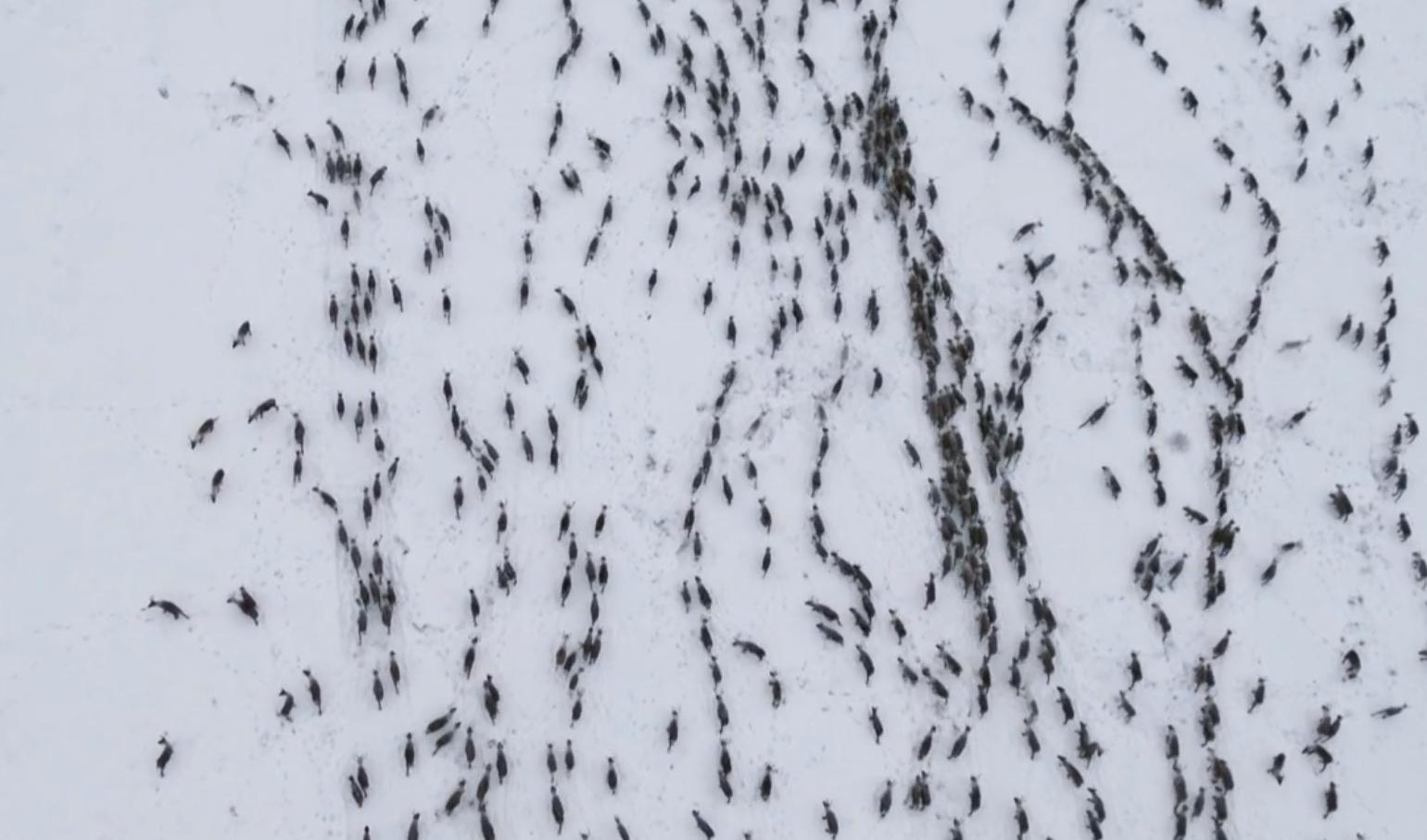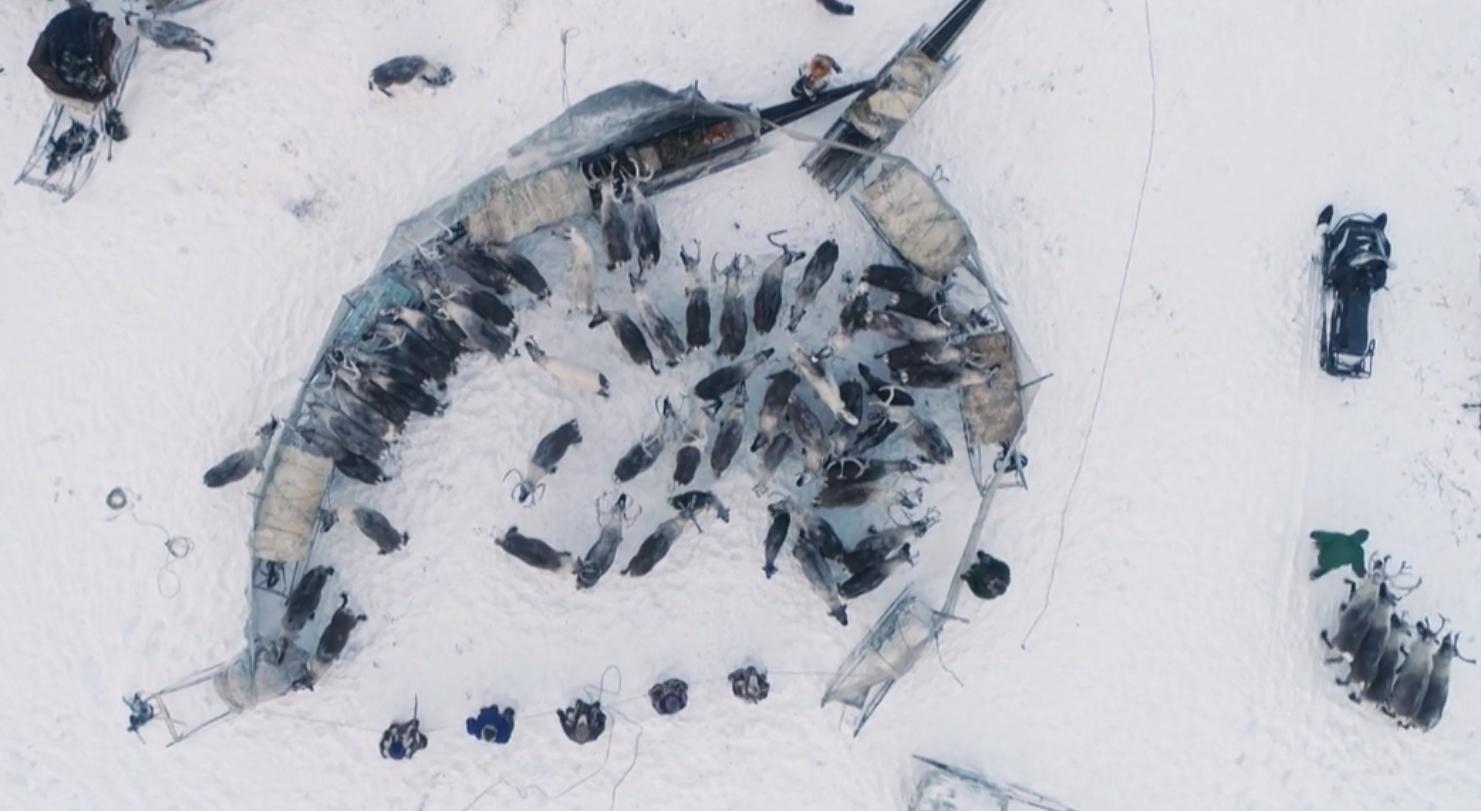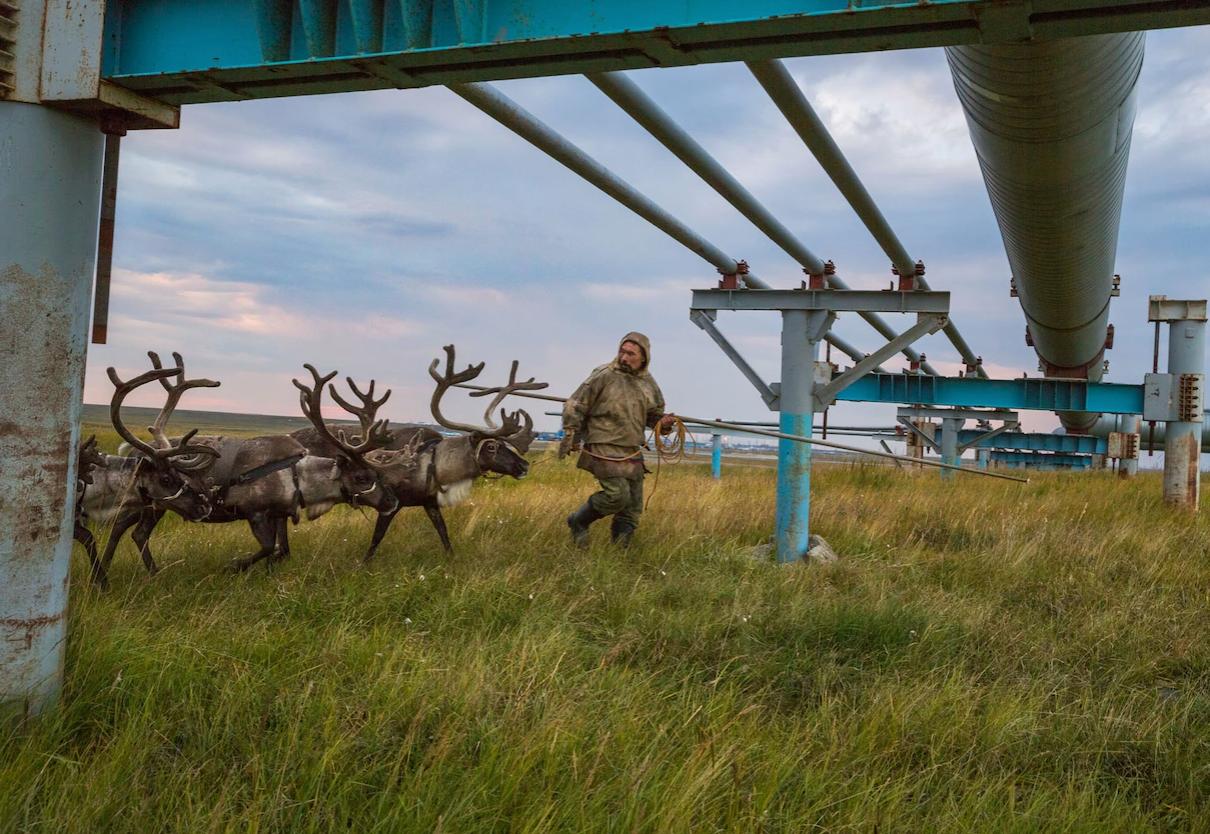
3 minute read
Living with Permafrost
Nyadma Khudi, a Nenets herder, leads reindeer under a pipeline at the Bovanenkovo gas field on Siberia’s Yamal Peninsula. When gas lines were new, the animals shied at them. Now they follow Khudi without hesitation—as they must to reach summer pastures in the north.
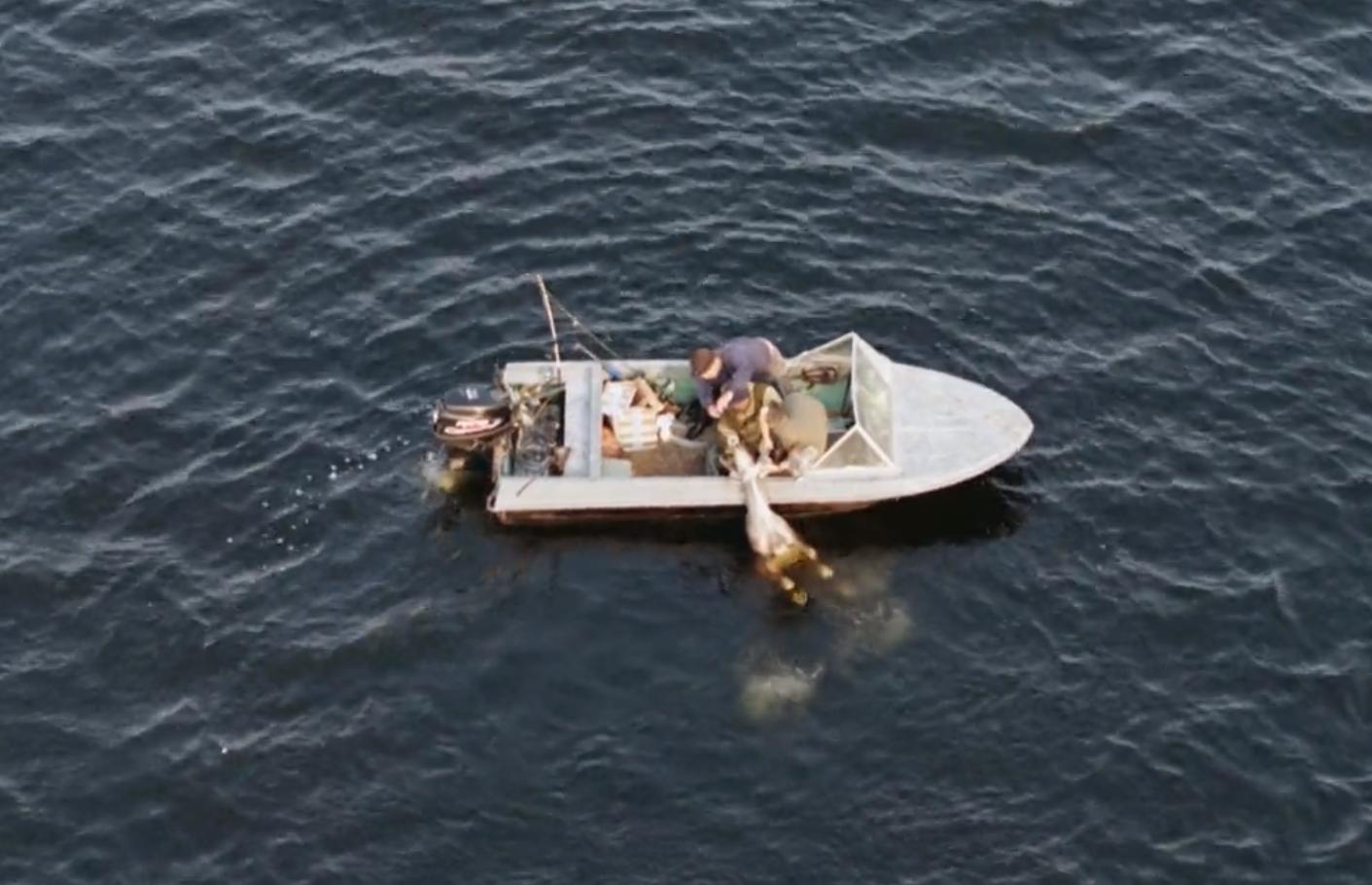
Advertisement
local biologist and permafrost scientists attaching tracking devices onto wild reindeer while they swim as that’s when they are most vulnerable
Reindeer are perhaps best recognized by their magnificent antlers, the largest of any deer species in proportion to their bodies. They’re also notable for their epic thousand-mile journeys every year in search of food, in herds of 100,000 or more.
And they’re supremely important to the Arctic ecosystem as a source of food and livelihood for local people, and because of their power to reshape vegetation by grazing. But the populations of reindeer, a.k.a. caribou, near the North Pole have been declining dramatically in recent years. Since the mid-1990s, the size of reindeer and caribou herds has declined by 56 percent. That’s a drop from an estimated 4.7 million animals to 2.1 million, a loss of 2.6 million. “Five herds,” out of 22 monitored “in the Alaska-Canada region, have declined more than 90 percent and show no sign of recovery,” according to the latest Arctic Report Card from the National Oceanic and Atmospheric Administration, out Tuesday. “Some herds have all-time record low populations since reliable record keeping began.”
Herds have lost hundreds of thousands of individuals, as measured by aerial photography of herds and counts in areas where caribou give birth. And their declines affect not just the landscape but the people who depend on it. The report explains that the declining number of animals are “a threat to the food security and culture of indigenous people who have depended on the herds.“ The herds have been declining in recent decades due to a complicated mix of factors including hunting, disease, diminished food availability, and climate change, the report explains. On one hand, you’d think that with climate change, the Arctic would become a more favorable environment for these grazing animals. Longer, warmer summers mean more vegetation for them to nosh on. And according to the Arctic Report Card, the Arctic did grow greener between 1982 and 2017. But it seems the warmer Arctic summers are also taking a toll on the reindeer. “Warmer summers also have adverse effects through increased drought, flies and parasites, and perhaps heat stress leading to increased susceptibility to pathogens and other stressors,” the report notes. Higher summer temperatures and wintertime freezing rain (as opposed to snow) seem to be correlated with adult caribou mortality.
Warmer summers have also meant that diseases, long locked in the Arctic permafrost, may thaw and spread among herds, though scientists aren’t completely sure how much of an impact this is having. And warmer winters can hurt them too. When it rains in the Arctic, as opposed to snow, it can freeze over into ice. That makes it harder for the caribou to walk, and to eat. In 2013, 61,000 (61,000!) reindeer died of starvation in Russia due to excess ice. Currently, a lack of snow in Sweden is impeding reindeer migrations there. As the climate warms, and as freezing rain replaces snow in the far north, this threat may increase
The most recent rain-on-snow event of November 2013 resulted in 61 000 reindeer deaths, about 22% out of 275 000 reindeer on the Yamal Peninsula, says the paper, which warns that these events are now increasing in severity. In this paper, the scientists combined empirical data and modelling for major extreme weather events in 2006 and 2013 to find that the likely trigger was brief periods of Barents and Kara sea ice thinning during early November.
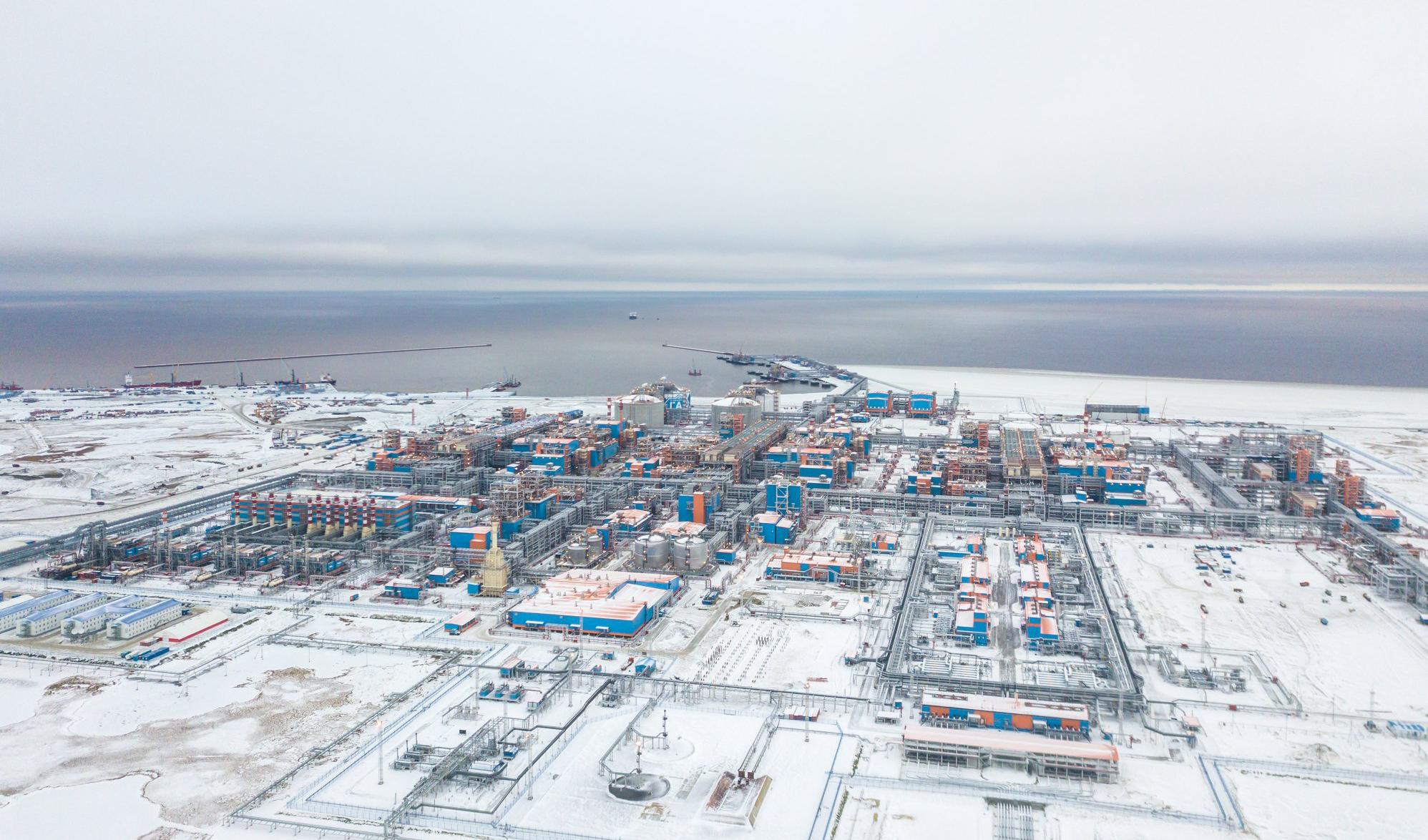
Yamal megaproject/Yamal LNG production facility on the Yamal coast
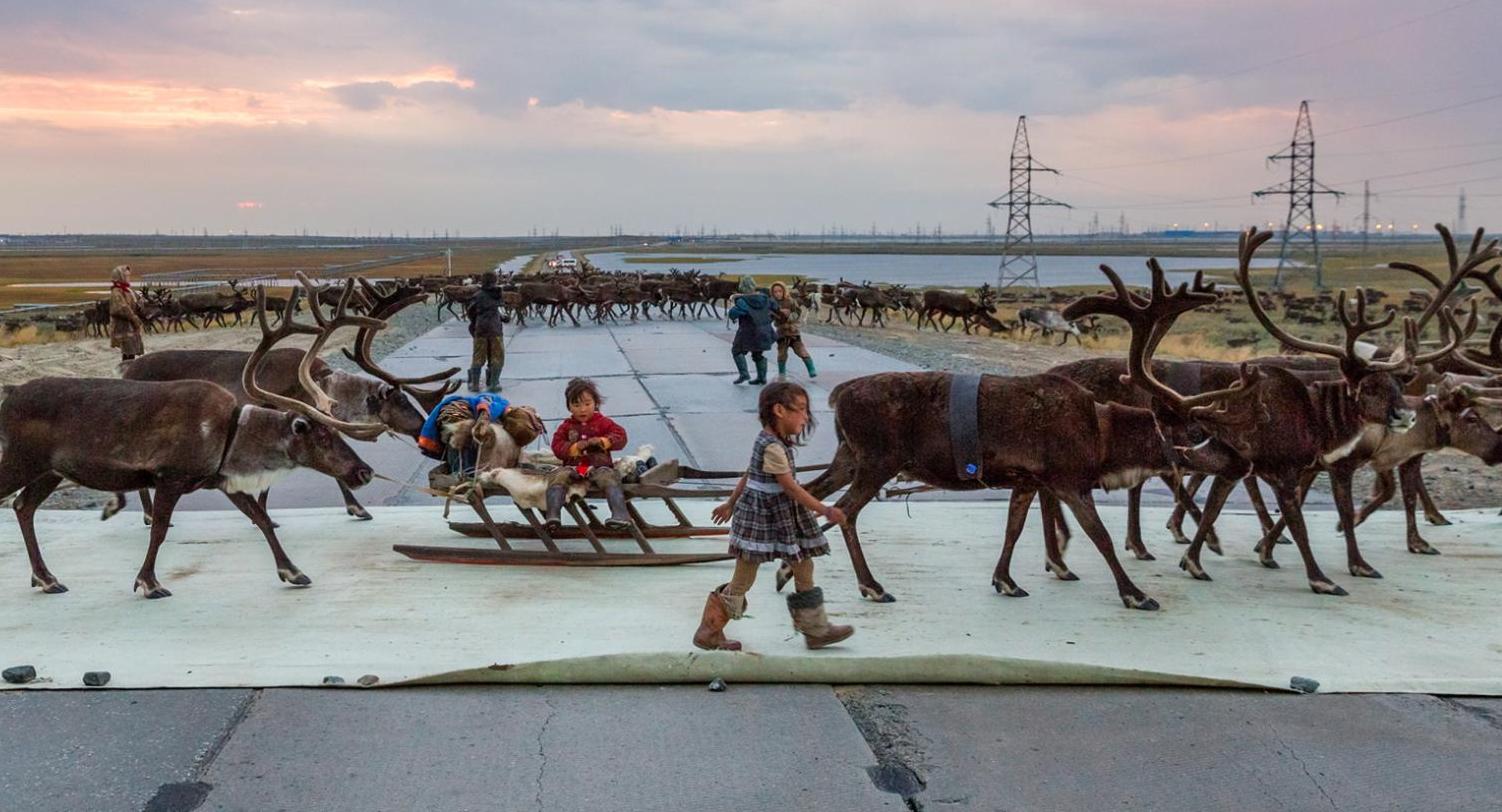
“White carpet” treatment from Gazprom, the company that operates Bovanenkovo, as the herd crosses the gas field. The geotextile is supposed to make it easier for reindeer bulls to pull the sleighs across the road. Nenets people’s campsite along migration route
